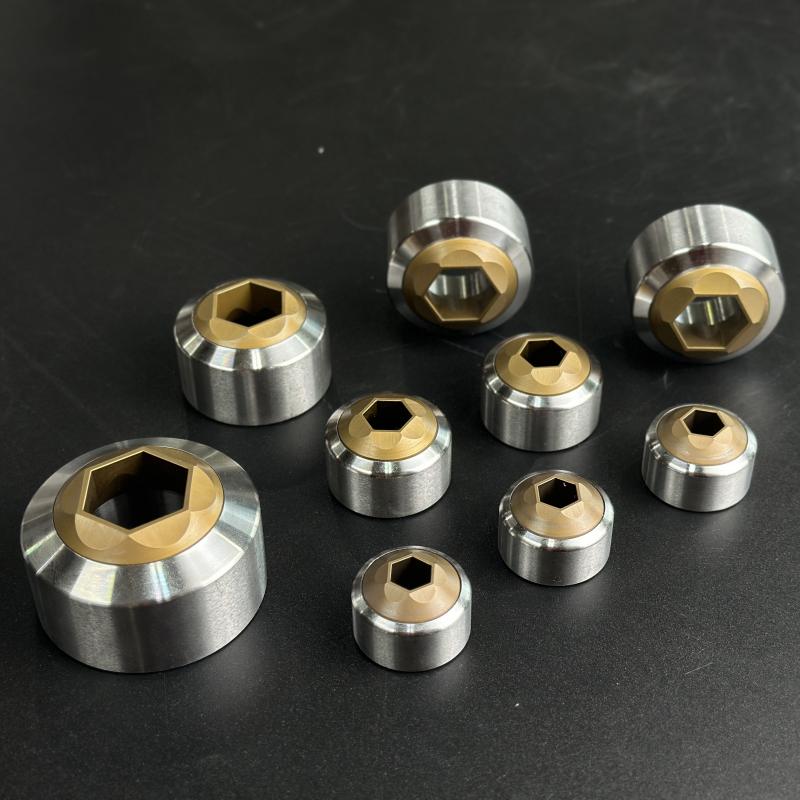Trimming Dies: Definition, Characteristics, Applications, and Maintenance
Definition of Trimming Dies
Trimming Dies are specialized tools used in manufacturing processes to remove excess material or flash from a workpiece, typically after a forming operation such as forging, casting, or stamping. These dies ensure the final product meets precise dimensional tolerances and surface finish requirements. They are commonly employed in metalworking industries to achieve high-precision components.

Key Characteristics of Trimming Dies
Trimming dies exhibit several critical characteristics that determine their performance and durability:
Material Hardness: Typically made from high-grade tool steel (e.g., D2, A2, or H13) with a hardness range of 58-62 HRC to withstand high cutting forces.
Precision Tolerance: Machined to tight tolerances of ±0.025 mm (±0.001 in) to ensure accurate trimming.
Wear Resistance: Coated with materials like TiN (Titanium Nitride) or CrN (Chromium Nitride) to enhance lifespan, reducing wear rates by up to 50%.
Cutting Edge Geometry: Features sharp edges with rake angles between 5° to 15° for efficient material removal.
Thermal Stability: Designed to operate at temperatures up to 400°C (752°F) without significant deformation.
Applications of Trimming Dies
Trimming dies are utilized across various industries for precision finishing operations:
Automotive Industry: Used to trim flash from forged components like connecting rods, gears, and suspension parts, achieving tolerances within ±0.1 mm.
Aerospace: Critical for trimming turbine blades and structural components, where surface finish must meet Ra ≤ 1.6 µm.
Consumer Electronics: Trims excess material from stamped metal casings for smartphones and laptops, ensuring seamless edges.
Medical Devices: Trims surgical instruments and implants to sub-millimeter precision, complying with ISO 13485 standards.
Construction: Used in producing precision-cut steel beams and brackets with shear strengths exceeding 500 MPa.
Maintenance of Trimming Dies
Proper maintenance is essential to prolong the lifespan and performance of trimming dies:
Regular Cleaning: Remove debris and metal shavings after each use using ultrasonic cleaners or compressed air.
Lubrication: Apply high-temperature grease (e.g., Molykote PG-65) to sliding components every 500 cycles.
Edge Inspection: Check cutting edges for wear or chipping using a 10x magnifier; replace if wear exceeds 0.05 mm.
Corrosion Prevention: Store dies in a dry environment with silica gel packs to maintain humidity below 40%.
Reconditioning: Regrind worn edges using CNC tool grinders to restore original geometry, ensuring ±0.01 mm accuracy.
Alignment Checks: Verify die alignment with a dial indicator (accuracy ±0.002 mm) to prevent uneven wear.
Advanced Maintenance Techniques
For high-volume production environments:
Laser Cladding: Repair worn edges by depositing tool steel powder (e.g., H13) with a laser, achieving 95% original hardness.
Predictive Maintenance: Use vibration sensors to monitor die performance, detecting anomalies before failure occurs.
Trimming dies are indispensable in precision manufacturing, offering unmatched accuracy and efficiency. By adhering to rigorous maintenance protocols, manufacturers can ensure optimal performance and longevity, reducing downtime and production costs.











